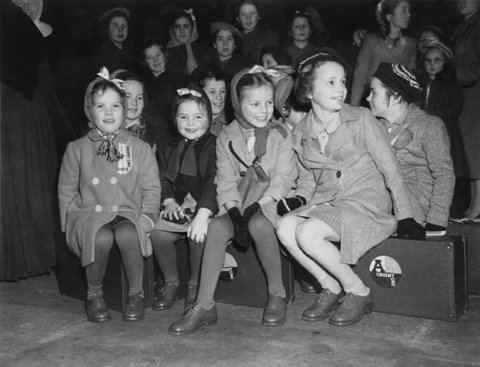
Moments captured forever on film
Toby Hopkins of Getty Images reflects on the skills and challenges shared by press photographers past and present.
Beginning my career in photography at the Hulton Getty Archive (Hulton Deutsch as it was then) in the 1990s, I inherited a sense of the hierarchy of collections. Most prestigious was the Picture Post archive, featuring the work of photographers such as Bert Hardy, Thurston Hopkins and Kurt Hutton, some of the most respected photojournalists of their time. A rung below that were the older collections: you could literally feel the quality of a Fox Photos print, on its thick well-preserved paper.
The Keystone collection arrived at the archive with less fanfare, and without a backstory, beyond its filing cabinets of reference cards. However, it was very often to the Keystone collection that the Hulton archive researchers went first when they had a client’s brief to fulfil. Whether the client was looking for the background to a political event or to write up the early career of a celebrity, it was very often a Keystone photographer who 20 or 40 years before had taken the key image.
There is good reason for this. Keystone was one of the best of a group of photo agencies dotted around Fleet Street who kept the British papers illustrated through the middle decades of the twentieth century. Its mission was to get more images published in the papers than its competitors. To achieve that, its photographers had to become experts in how to inform and entertain, and the best of them, Ron Burton included, produced ground-breaking, powerful images.
I am now lucky enough to work alongside Getty Images’ current news photographers. Photographers like Ian Gavan who writes eloquently here about working in available light to make compelling images of people. Or Peter MacDiarmid who faced the challenge of capturing as yet unseen views of the Red Arrows . There is so much skill in what these news photographers do, working at speed, making the best of variable lighting, relying on what the camera captures rather than effects in production, obtaining access to take their pictures, capturing the essence of an event, finding an alternative view…. and all across a wide range of subject matter from sports to news to entertainment.
Ron Burton is not around to tell his stories today. We know he faced similar challenges to today’s press photographers. And he and his contemporaries worked with less powerful cameras, less logistical support and fewer public relations opportunities. What we do have, fortunately, are the stories that Ron Burton told in the best way he knew, as moments captured forever on film.